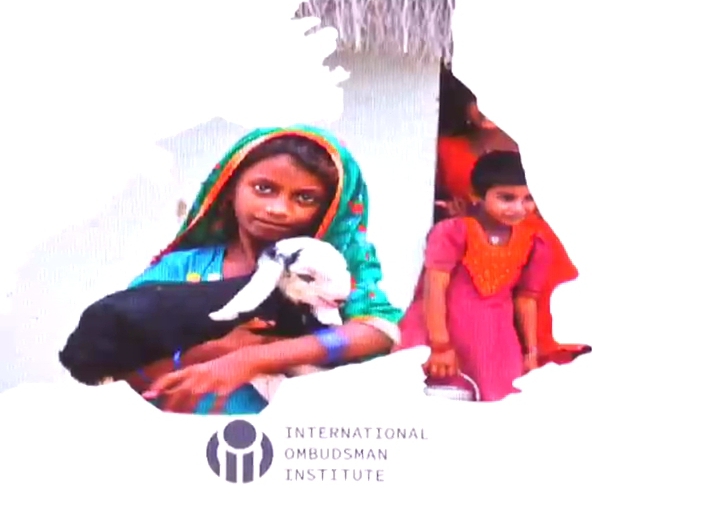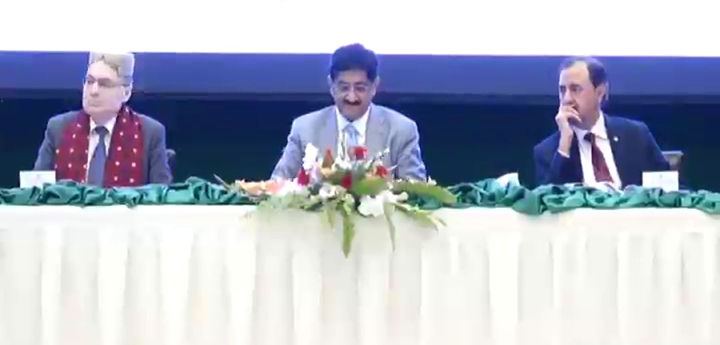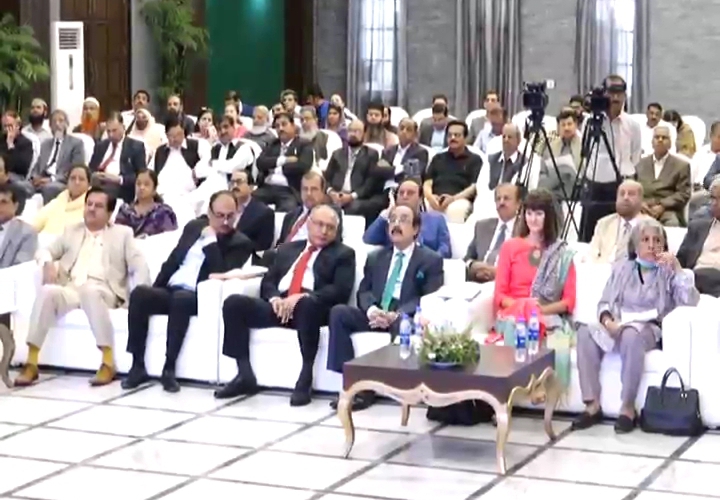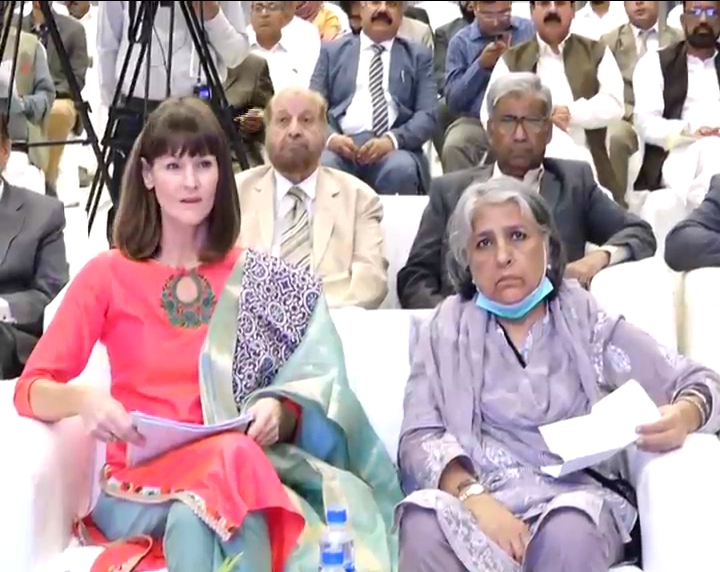
Sindh Chief Minister launches study report on the Assessment of Stunting in Tharparkar
Karachi Sindh
Sindh Chief Minister Syed Murad Ali Shah launched on Monday the study report on the Assessment of Stunting in Tharparkar that indicates the major risk factors associated with malnutrition such as chronic poverty, poor access to water, poor hygiene and sanitation practices, seasonal migration, early marriages, low birth spacing, lack of connectivity of transport, inadequate human resource.
The study report on the Assessment of Stunting in Tharparkar was conducted on the initiative of the Ombudsman Sindh with Regional Subsidy of International Ombudsman Institution (IOI) by Research and Training Wing, Planning & Development Department, Sindh.
 The launching ceremony was held at Chief Minister’s House and was attended by International Ombudsman Institute/Ombudsman Western Australia Mr. Chris Field, Principal Assistant Ombudsman Ms. Rebecca Poole, Federal Ombudsman/President, Asian Ombudsman Association, Ejaz Qureshi, Minister, Parliamentary Secretary Health Qasim Soomro, Chief Secretary Sohail Rajput, Chairman P&D Hassan Naqvi and members of civil Society and others.
The launching ceremony was held at Chief Minister’s House and was attended by International Ombudsman Institute/Ombudsman Western Australia Mr. Chris Field, Principal Assistant Ombudsman Ms. Rebecca Poole, Federal Ombudsman/President, Asian Ombudsman Association, Ejaz Qureshi, Minister, Parliamentary Secretary Health Qasim Soomro, Chief Secretary Sohail Rajput, Chairman P&D Hassan Naqvi and members of civil Society and others.
 Murad Ali Shah highlighted the steps taken by his government to improve the health facilities and appreciated that office of the Ombudsman through such studies pointed out gaps to help the government take steps to fill them by improving service delivery. He showed his complete support to implement the recommendation of the study and to increase the outreach of the office of the Ombudsman for providing administrative justice at doorsteps to the masses.
Murad Ali Shah highlighted the steps taken by his government to improve the health facilities and appreciated that office of the Ombudsman through such studies pointed out gaps to help the government take steps to fill them by improving service delivery. He showed his complete support to implement the recommendation of the study and to increase the outreach of the office of the Ombudsman for providing administrative justice at doorsteps to the masses.
Mr. Chris Field, President, IOI appreciated that Ombudsman Sindh conducted research with regional subsidy support of IOI regarding very important issues and expressed that his institution would also provide all possible support for such future programs of Sindh Ombudsman as such reports were also helpful to other members of International Ombudsman Institutions.
Ejaz Qurshi, the Wafaqi Ombudsman who is also President of the Asian Ombudsman Association in his speech highlighted the role of Ombudsman offices in providing speedy and free-of-cost justice to the general public throughout the country within the shortest possible time.
 Provincial Ombudsman Ajaz Ali Khan, in his address welcomed the foreign delegation and while highlighting the achievements of the office of Ombudsman Sindh expressed his gratitude that the Sindh Chief minister converted the recommendations of the last study about girls’ education into CM directives and his office has been supporting the Education & Literacy Department to implement the same in letter & spirit to improve the girl education in the province.
Provincial Ombudsman Ajaz Ali Khan, in his address welcomed the foreign delegation and while highlighting the achievements of the office of Ombudsman Sindh expressed his gratitude that the Sindh Chief minister converted the recommendations of the last study about girls’ education into CM directives and his office has been supporting the Education & Literacy Department to implement the same in letter & spirit to improve the girl education in the province.
He said that stunting in children below five years old has been a major problem in Pakistan since 2001. Stunting is a measure of chronic malnutrition and is the most crucial indicator of human capital development and occurs in the first 1000 days of life after conception till the age of two years and is highly irreversible, which not only increases morbidity and mortality but also retards physical and cognitive growth diminishes learning capacity and school performance and leads to lower adult productivity. At the start of the ceremony, the P & D Department gave a comprehensive presentation about the study and highlighted that the issue of stunting in children under five years old has been a major problem in Pakistan for the last two decades. It was 41.6 percent in 2001 and 43.7 percent in 2011, 40.2 percent in 2018, and remained globally critical. Sindh’s stunting rate is 48.9 percent as per National Nutrition Survey (NNS) – 2011 and 45.5 percent as per NNS-2018 and as per the Multiple Indicator Cluster Survey (MICS) 2018 it increased to 50 percent and Tharparkar has 50.67 percent compared to 63 percent in MICS 2014. The ratio is decreasing gradually due to the attention of the government since 2011, besides the efforts made and the role played by Donors and Private Sector in multi-sectoral nutrition intervention. (PR)
______________